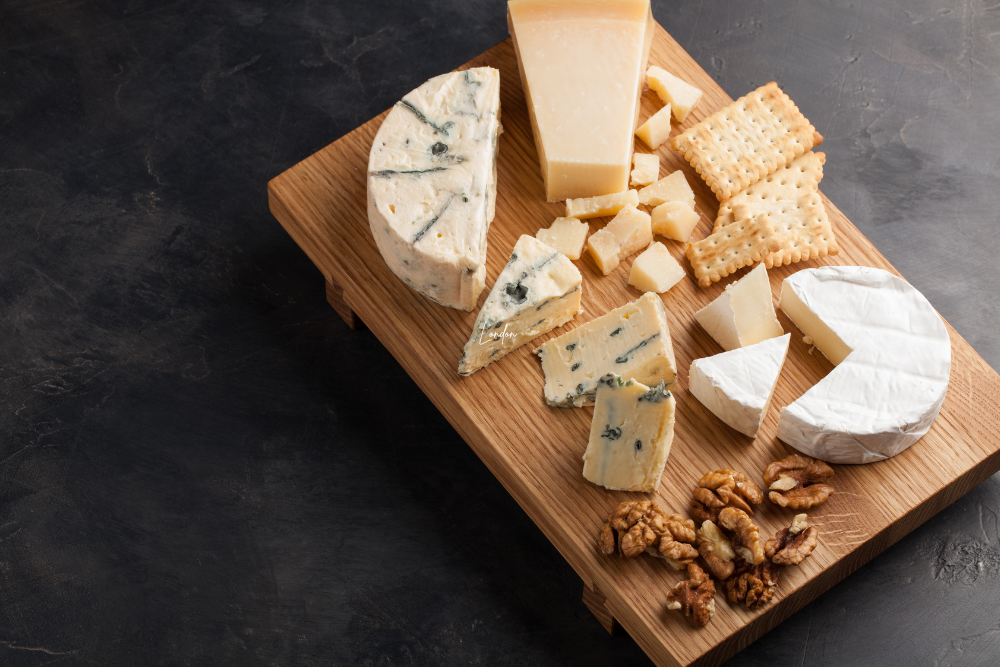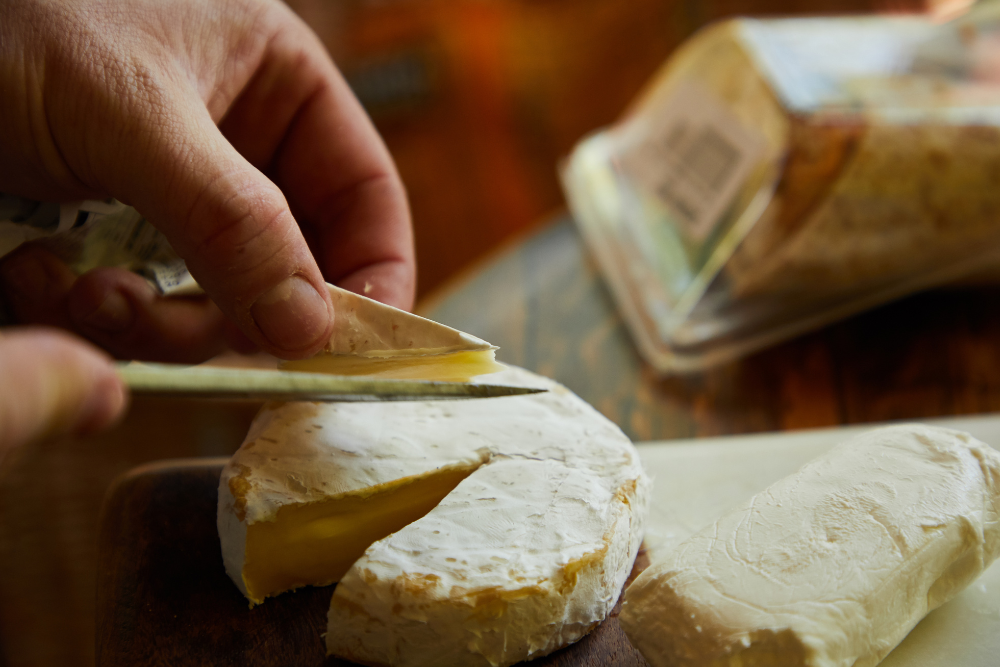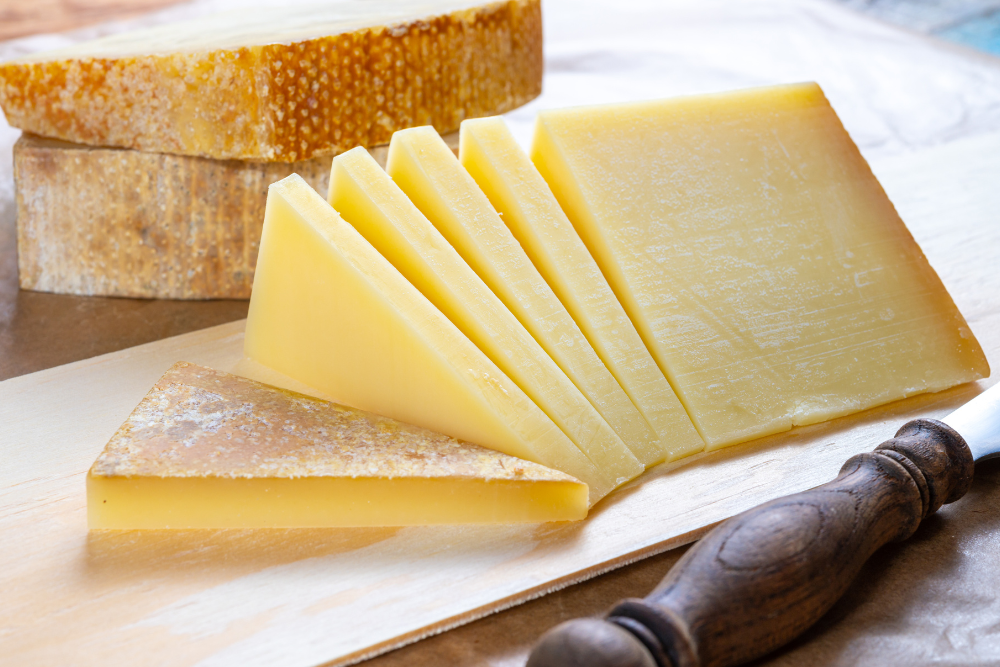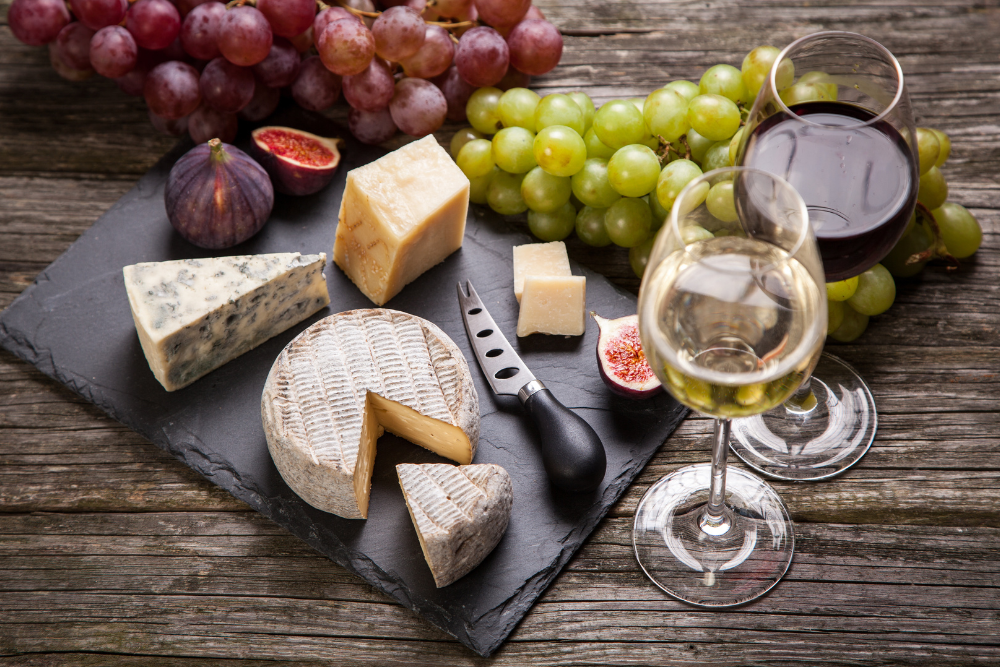France is synonymous with cheese, boasting over 1,000 varieties that range from creamy Brie to pungent Roquefort. Whether you’re a seasoned cheese lover or a curious beginner, tasting French cheese is an experience that engages all the senses. This guide will help you explore the best of French cheese, from selecting and pairing to tasting like a connoisseur.
1. Understanding French Cheese Categories

French cheeses are categorized based on their texture, aging process, and milk source. Here are the main types:
- Soft-Ripened Cheeses: Brie, Camembert, Saint-André – creamy and mild with a white bloomy rind.
- Blue Cheeses: Roquefort, Bleu d’Auvergne, Fourme d’Ambert – rich, tangy, and veined with blue mold.
- Hard Cheeses: Comté, Beaufort, Cantal – firm and nutty, often aged for deeper flavors.
- Washed-Rind Cheeses: Epoisses, Munster, Reblochon – strong-smelling and bold in flavor.
- Goat Cheeses: Chèvre, Crottin de Chavignol, Valençay – tangy and fresh, sometimes covered in ash.
2. How to Properly Taste French Cheese

To fully appreciate the complexity of French cheeses, follow these tasting steps:
- Observe: Examine the cheese’s color, texture, and rind.
- Smell: Take in the aroma, which gives clues about its flavor intensity.
- Taste: Let the cheese sit on your tongue to identify layers of flavor, from creamy and buttery to sharp and tangy.
- Pair Thoughtfully: Complement cheeses with suitable bread, fruits, and beverages.
3. Perfect Pairings for French Cheese

Enhance your cheese experience with these classic pairings:
- Wine: Brie with Champagne, Roquefort with Sauternes, Comté with Chardonnay.
- Bread: A crusty baguette works well with almost any cheese, while rye or nutty bread pairs beautifully with stronger varieties.
- Fruits & Nuts: Grapes, figs, walnuts, and almonds balance and enhance flavors.
- Honey & Jams: A drizzle of honey over blue cheese or fig jam with Brie adds a sweet contrast.
4. Where to Taste French Cheese

For an authentic cheese-tasting experience, consider these destinations:
- Fromageries: Specialty cheese shops like Androuet in Paris offer expert guidance and tastings.
- Farm Visits: Visit cheesemakers in regions like Normandy, Auvergne, and the Alps.
- Markets: Local markets in France provide access to fresh, artisanal cheeses.
- Cheese Festivals: Events like the Fête du Fromage in France celebrate regional cheese varieties.
5. Tips for Hosting a French Cheese Tasting at Home

Want to bring the French cheese experience to your home? Follow these steps:
- Select a Variety: Include at least one cheese from each category.
- Serve at Room Temperature: Take cheeses out of the fridge an hour before serving.
- Use a Proper Cheese Board: Arrange cheeses from mildest to strongest.
- Provide Accompaniments: Include fresh bread, fruit, and wine pairings.
- Encourage Discussion: Share tasting notes and preferences with guests.
Final Thoughts
French cheese tasting is more than just a culinary delight—it’s a journey through history, culture, and craftsmanship. Whether you’re visiting France or enjoying a tasting at home, embracing the art of French cheese will elevate your appreciation for this beloved tradition.












